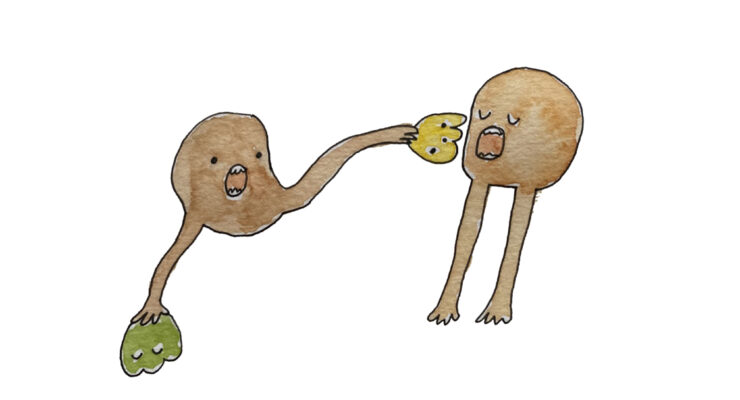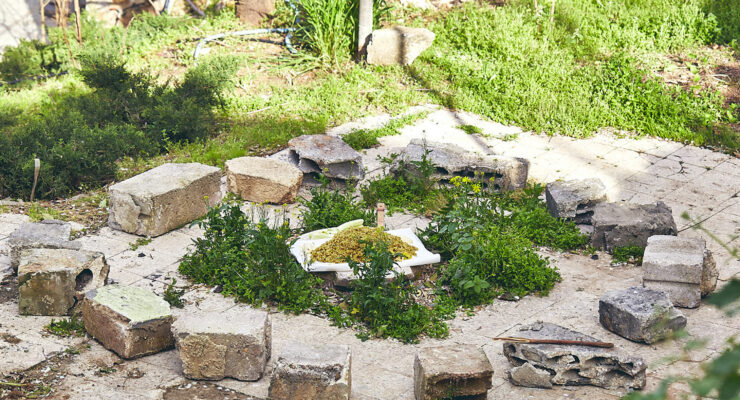The story of Food in Photography
The exhibition 'Food for the eyes: The story of Food in Photography', was on show this summer at the C/O Berlin. Our Germany correspondent Inés Lauber reviewed it for us, as she was taken on a journey through both the history of food photography as well as the development of food culture. "The exhibition shows how broad the topics can be, since both themes are already so rich in themselves. It is about more than just food photography, as one can see society mirrored in many facettes throughout the exhibition."
From black and white analogue still life to fast and instant photography – can everyone and anyone be a food photographer with to Instagram today?
Food is essential, it is the fuel which keeps our bodies going and keep us alive. Throughout the years food photography has pushed the boundaries of the every day, it has been celebrated through tradition, politics, race, social class, satisfaction, wealth, poverty and consumption.
‘Food for the eyes: The story of Food in Photography’ has celebrated the boundaries of where food can take the audience. It allows new and existing ‘foodies’ to question the everyday substance and explore the consumption of food. Split into three chapters – ‘Still-life’, ‘Around the Table’ and ‘Playing with Food’, we see the work of well-known artists including Martin Parr, Irving Penn, Cindy Sherman, Nobuyoshi Araki, Peter Fischli, David Weiss, Nan Goldin, Rinko Kawauchi and more.
"honour the barriers of food within the photograph"
Walking through the exhibition we see how each area has been carefully placed to express and honour the barriers of food within the photograph. It shows the time taken to photograph an image and the passion behind it. It is expressing the disclosure behind food photography. With time and precision, each image is carefully thought out using a detailed concept. It explains to the audience the difference between a food photograph and a hashtag image on Instagram.
Martin Parr, Weston-Super-Mare, England (1998)

Jo Ann Callis, Black Table Cloth, 1979

‘Playing with Food’ (one area of the exhibition) captures the nutritional aspect of food. It allows the audience to once again awaken the senses with eating, it opens up a world of movement, of thinking through the transportation from plate to mouth. An area of touch, of smell and once again trusting our other senses before sight. The exhibition explores how food photography has changed the meaning of a recipe. Rather than choosing and using your imagination, we now, as an audience, are choosing a recipe by the photo of its final stage. Again, pushing the idea that, as we grow, we are losing the need to use other sense aside from sight.
Artists have a huge role in reshaping the way, we as an audience look at food. The way we perceive food at this moment is through a social platform, where objects are placed without meaning and purely for aesthetics. No longer seeing food for its deeper meaning. ‘Still-life’ (another area within the exhibition) contradicts the aesthetics and has played a huge role in capturing the audience attention through its concept. Highly influenced through early life traditions which work within a still life painting, early on food photographers would stick with the classic food and flowers. However, still concentrating on the richness of the objects themselves. Whilst now we see traditions changing, turning still life food photography into fine art through an addition of a contemporary twist. Two artists who express humour towards traditional lifestyles are Martin Parr with “New Brighton” and Wolfgang Tillmans with “summer still-life”.
Whilst the exhibition informs the audience about the change of food photography, we also see how we look, feel or taste food has changed. It shows us the possibilities of how one can stage an image for aesthetics rather than concept. The most significant change and influence in the past decade are from the development of technology. We can begin to question what qualifies as a photographer; can we now be a photographer with a touch of a button? ´Food for the eyes: The story of Food in Photography´ tackles the importance of food photography, it inspires people to make an improvement to the quality and future of the food we eat and see. It brings back the importance and enjoyment of food through the eyes of art.
–
This article was written by our Germany correspondent Inés Lauber.











